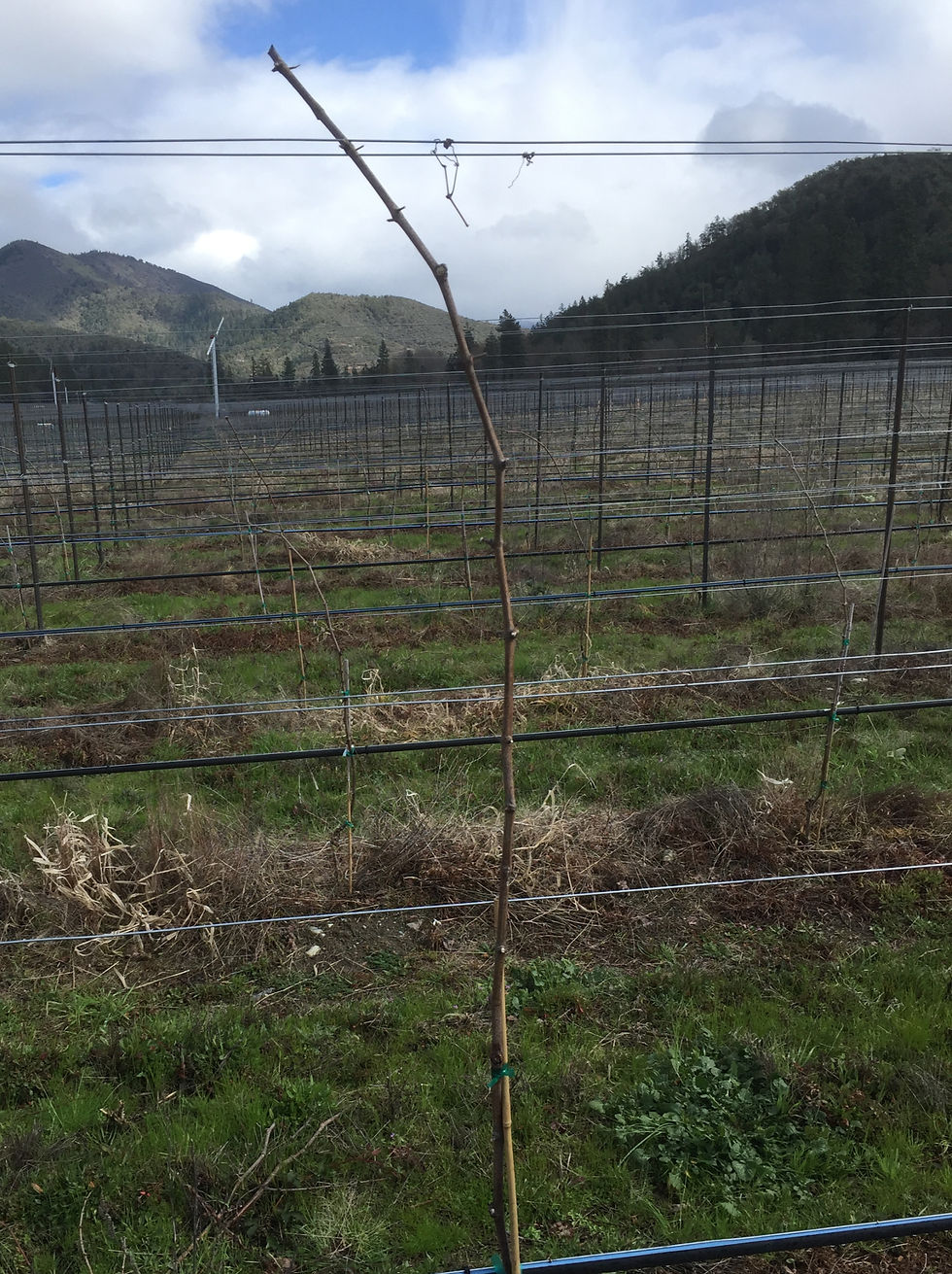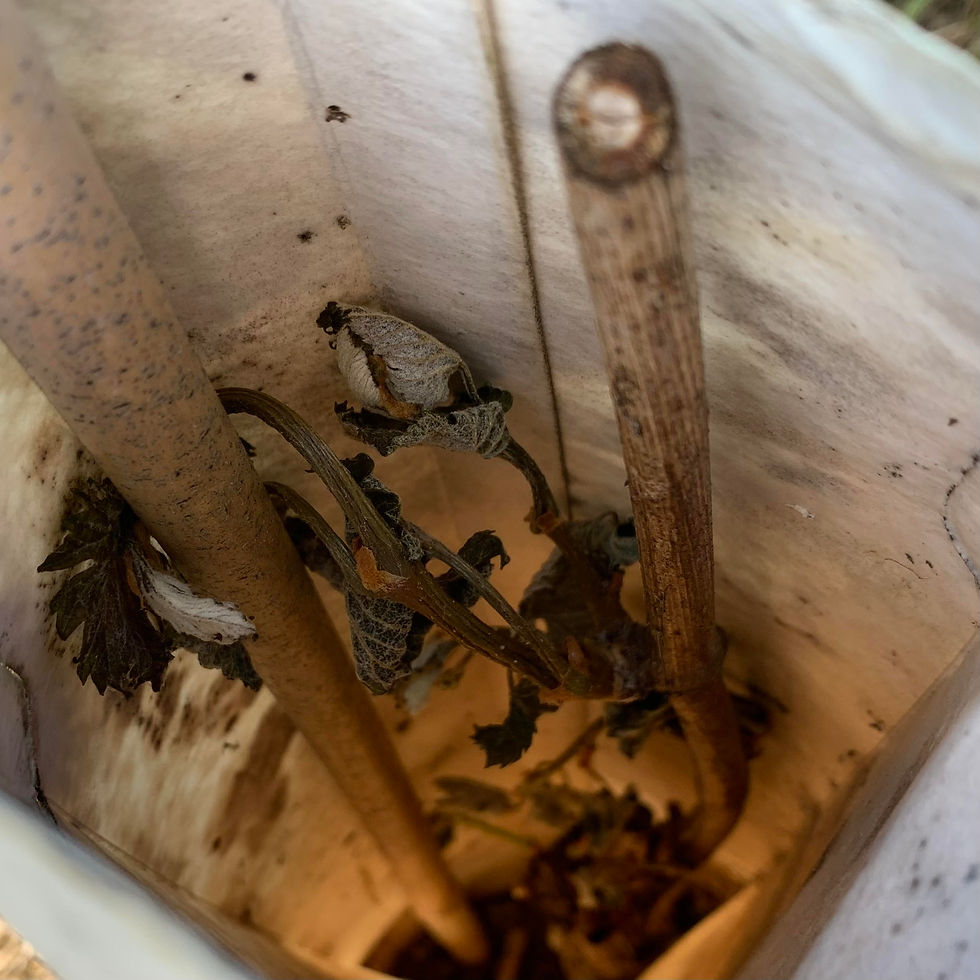You only get one chance to plant and train a vine, so optimising this practice is fundamental to establishing a resilient vineyard. There is a prevailing paradigm in viticulture that it is in the best long-term interest of the vine to 2-bud it the year after planting, even if there is optimal cane growth to get to, or even lay on, the wire. The rationale for this generally given by growers is that it is “better for the vine’s root system development” to 2-bud, and that pushing for anything more is “greedy.” However, many vineyards in Marlborough are either expanding or in the midst of redevelopment, and we thought – what better time to question the status quo.

Before exploring this subject further - a note on 2-budding:
2-budding is a necessary step in the training and development of many vineyards where growth after planting may be limited due to a myriad of factors – planting date, limited nutrition, limited water, etc. This question is posed to vineyards that are planted early, have access to ample water and nutrition, and have been managed in season to develop 1-2 strong canes suitable for trunk establishment.
Early Season Growth
It is true that young vines have limited carbohydrate storage because they only have a small amount of permanent wood. Thus, there is limited energy to push buds in the spring, so leaving too many buds at pruning can lead to poor growth of individual shoots. While 2-buding ensures limited buds competing for that early season push, growing points can be limited by other means such as early shoot thinning. Leaves are a carbohydrate sink until they reach approximately 1/3 their full size, so active, carbon positive leaves can be present quite early on after budbreak, and those can fuel the subsequent development of younger leaves on their shoot without requiring much carbohydrate from the stored reserves when shoot number is moderated.
Permanent Wood Development and Nutrient/CHO Storage
Two-budding removes a huge proportion of the wood and therefore stored reserves the vine developed in the first year. Leaving more cane, but shoot thinning or disbudding unwanted/poorly placed shoots could allow canopy to be developed more quicky, and thus the vine moving from using stored carbohydrates to photosynthate generated by maturing leaves sooner. More stored carbohydrate in a longer cane could also lead to substantially more pre-budburst root activity, and thus actually be beneficial for root system development, rather than detrimental as is commonly thought.
Also, as more and more growers are thinking about promoting sapflow in their vines for longevity, 2 budding introduces a cut, and therefore the wound response and sapflow interruption from it, where it may not need be done. It also increases the risk of trunk disease pathogens infecting pruning wounds very close to the graft union, putting the vine more at risk than a cut farther away from the union.
Frost Risk

Another downside of 2 budding, especially in a cool climate like Marlborough, is the buds are near the ground, where the coldest temperatures are generally experienced on frost nights in the spring. Even with frost protection systems there is a risk for young vines, where grow tubes can funnel cold air directly onto the vines. Thus, by 2-budding, we are increasing
frost risk for young vineyards compared to shoots coming from at, or near, the wire. I have personally seen vineyards where 2-budded vines were nuked and neighbouring second year vines on the wine sustained no damage.
The Literature
There are several publications looking at nutrient and carbohydrate storage in young vines, however we could find minimal work on the downstream effects of pruning choices made during establishment, and we thought it was something pretty important to investigate. With some investigation we came across abstracts that suggest we may be on the right track. Trials were conducted to compare grow tubes and pruning methods in year 1 of planting during which treatments that had more above ground tissue resulted in greater below ground tissue (Bordelon & Blume 2000, Thomas et al. 2017). This supports our hypothesis that, as long as the vines were managed to a sustainable number of growing points, the “balance” of the vine isn’t “thrown off” by leaving more cane rather than 2 budding. Additionally, establishing the vine’s trunk earlier leads to greater canopy potential, which could make the vine become carbon positive earlier, be less at risk of shoot damage from spring frost or grazing sheep (common in NZ), get to production goals sooner, and have a similar, if not a more robust, root system.
Our Research
Our plan is to measure canopy characteristics and yield (if any) from different pruning treatments during the establishment years. After two years, some vines will be excavated to harvest intact root systems to look at their size, shape, biomass, and carbohydrate reserves. Reserves and biomass will also be measured in the aboveground parts to get a fuller picture of how choices early in the establishment of vineyards affect above to belowground partitioning of assimilates, root system development, and vine productivity. The economics, in terms of production and labour costs, will also be determined so that the most sustainable choices can be made by growers planting or redeveloping vineyards.
Crazy? Maybe. But let’s find out.
Contact us if you would like to participate in this project.
References
Bordelon, Bruce & Blume, Jill. (2000). 196 Growth of Grapevines With and Without Grow Tubes. HortScience. 35. 424E-424. 10.21273/HORTSCI.35.3.424E.
Thomas, Andrew & Harris, Jackie & Bergmeier, Elijah & Striegler, Keith. (2017). Establishment Technique and Rootstock Impact ‘Chambourcin’ Grapevine Morphology and Production in Missouri. HortTechnology. 27. 248-256. 10.21273/HORTTECH03610-16.
Other Useful Resources
Schreiner, R.. (2016). Nutrient Uptake and Distribution in Young Pinot noir Grapevines over Two Seasons. American Journal of Enology and Viticulture
.png)
コメント